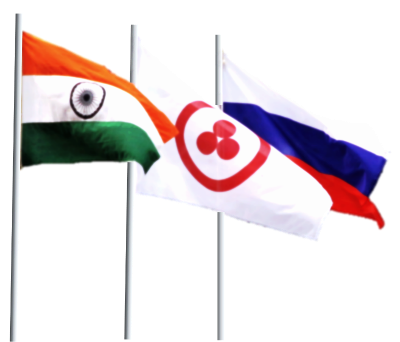17-22.06.2016
Indu Tripathy’s Explorations of Woman’s Soul
In June 17-22 a Delhi-based artist Indu Tripathy exhibited her pictorial works in the International Roerich Memorial Trust, Naggar.
Indu Tripathy grew up in the family of Assistant Director of the Bharat Kala Bhawan Museum in Benares and since childhood was surrounded by Indian art, classical and modern. She graduated from Agra University in Fine Arts and went on to do research in late Mughal painting in Benares Hindu University.
She was attracted to the style and themes of the renowned modern Indian artist Amrita Shergil, and deeply influenced by the Bengali Renaissance School.
In the exhibition one can see several of Mrs. Tripathy’s early works depicting women in the lap of nature executed in the wash technique invented by the Japanese and extensively employed by the stalwarts of Bengali School like Nandalal Bose, Gaganendranath Tagore and others. The technique lends her paintings the unforgettable transparent and soft touch which is so effective in expressing devotional and serene mood. It is a time-consuming and meticulous process that has almost disappeared from India’s art scene.
Mrs. Tripathy also displayed three paintings from her Rajasthan Series based on the daily life of Rajasthani gypsy tribes. She travelled to the remote corners of the state to make sketches of heavily decorated gypsy women doing their chores. The series is particularly striking due to the gaiety of colours employed by the artist.
The major portion of the exhibition is the series on the relationships between men and women. The series is done in oil but bears clear influence of the wash technique. The predominant colours used by the artist are red, turquoise blue and bottle green. The series depicts female characters sometimes single, sometimes paired up with males, surrounded by nature and conversing with birds. Most of them appear to be lost in reverie. Serene and contemplative, they at times remind one of the characters of Ajanta frescos. Despite their pensive mood, they seem to be filled with some kind of inner happiness and tranquility, while her couples are full of devotion, synergy and harmony – the qualities that are becoming increasingly rare in the families of today.
As the Russian Curator of the Roerich Trust Mrs. Larisa V. Surgina noted, Mrs. Tripathy’s art spreads happiness. It is, indeed, her conscious choice not to depict the painful and tragic aspects of human relationships, being all the while well aware of them. It is happiness that inspires people in life, not its opposite.





















